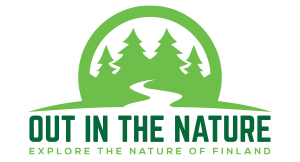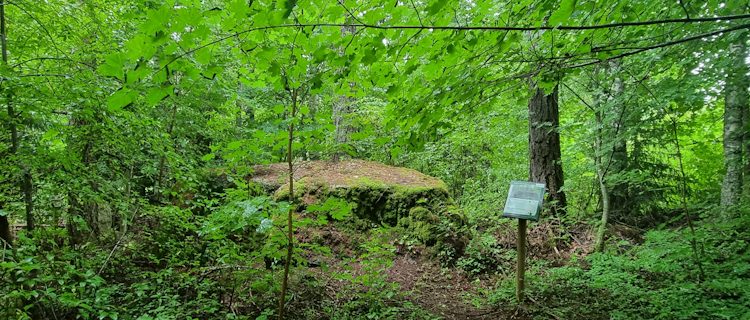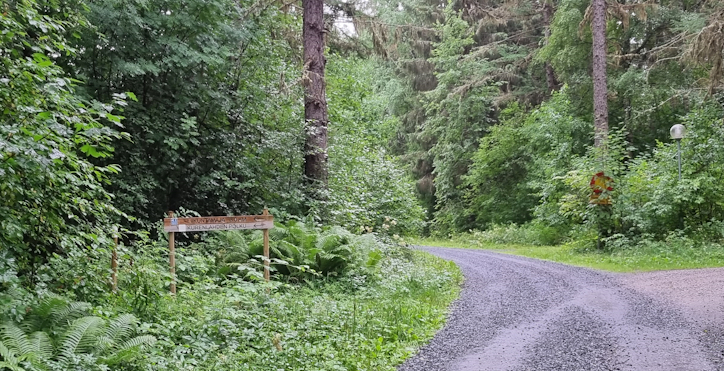My co-author Jenni has seen and written plenty of cup-marked stones so this autumn I made up my mind to see them, too. As I was passing by Hartola, I decided to check out the cup-marked stone at Hartola near Eko mansion. After all, the Southern regions of Kanta-Häme (Häme region) and Päijät-Häme as well as Varsinais-Suomi (Southwest Finland) are prime places to find cup-marked stones!
We drove in peaceful and even pastoral landscapes until we reached Eko mansion (Ekon kartano). As the mansion is now a school, I wasn’t entirely sure where to park but eventually settled on a larger open area next to a sign post.
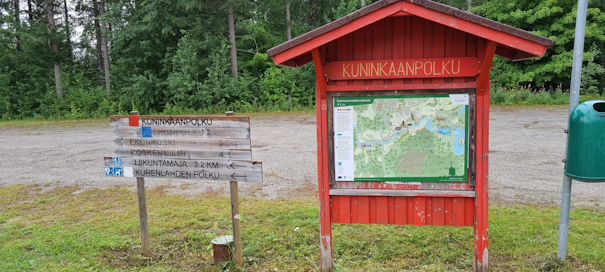
There are some signs pointing you towards the cup-marked stone but you still need to keep your eyes open. Once you leave the main mansion area, it’s only 180m until you reach your destination. Keep to the left of the path until you see a small path/bridge to your left and two signs with “Kurenlahden polku” and “Liikuntamaja“.
Keep to the left as if you were going backwards toward the mansion. In about 10-15m, you’ll spot a large stone to your left. There is a small guide plaque in front of the cup-marked stone so if nothing else, keep your eyes peeled for that. And voilá, there it is: Hartola cup-marked stone with several deep cups carved on the smooth top.
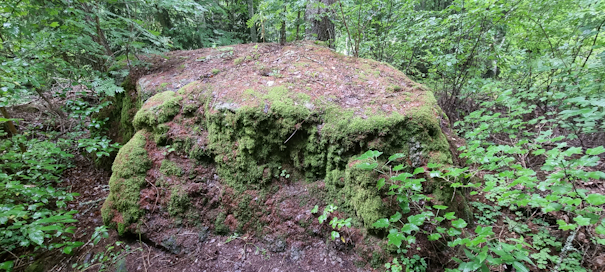
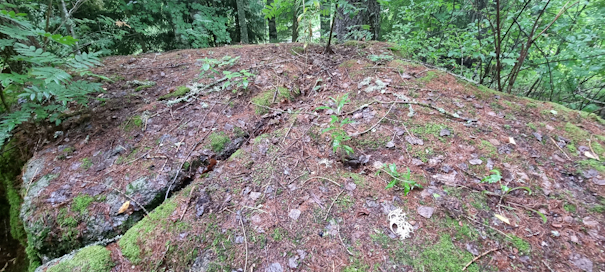
Hartola’s history and cup-marked stones
There are over 40 cup-marked stones around the greater Hartola area, so this one at Eko mansion is not alone. These stones are protected ancient monuments, so make sure to treat them with respect. The cup-marked stones in Finland are generally from the Iron Age which began in Finland around 500 BCE. However, some may be as recent as from the Middle Ages.
As you may have noticed, Hartola is even now prime agricultural land. Cup-marked stones are often discovered next to farm lands or historical burial grounds. The cups were carved onto soft stone and sacrificial grain was left there for spirits, goblins, or other creatures. The idea was to protect the harvest, have good luck hunting, or heal ailments with the sacred water collected in the cups.
Hartola has had habitation since the Stone Age, so 7000 years ago the first people moved to the area. Permanent settlement in Hartola came latest around the 800s CE. The area has been plentiful with harvest so seeing cup-marked stones at Hartola is no surprise.
Directions to Hartola cup-marked stones
Address: You can type Ekon kuppikivi on your navigator. Alternatively, you can type in an address Taimentie 21-15, 19600 Hartola, which will get you fairly close.
How to get there:
- Car: There is a small parking area for visitors near the Eko mansion (nowadays Itä-Hämeen opisto school).
- Bicycle: As you are cycling quite a bit in pastoral landscapes, there are no cycling paths. However, the views over fields are amazing.
- Public transport: You can get near Eko mansion at Hartola by public transport. The closest bus stop is Hartola vt 4 P. Check the Route Planner for timetables. You will have to walk 2,5km from the bus stop to the cup-marked stones.
Accessibility: The area is partially accessible when there is no snow. The stone is next to a narrow footpath which may be a bit narrow for wheelchairs or trolleys. However, you only need to go approximately 10m on this path to reach the cup-marked stones so I recommend you at least try.
When to go: You can visit at any time of the year. When there is snow and ice, it may be harder to see the cup-marks but as long as you recognise the correct stone, you should be able to clear away the snow.
Facilities: There are no official facilities in the area.
Want to see more cup-marked stones?
There are many places near Hartola with cup-marked stones, and they are estimated to have spread all over Finland during the 1st millenium. You can catch more cup-marked stones at Letku in Tammela or at Lohja.
